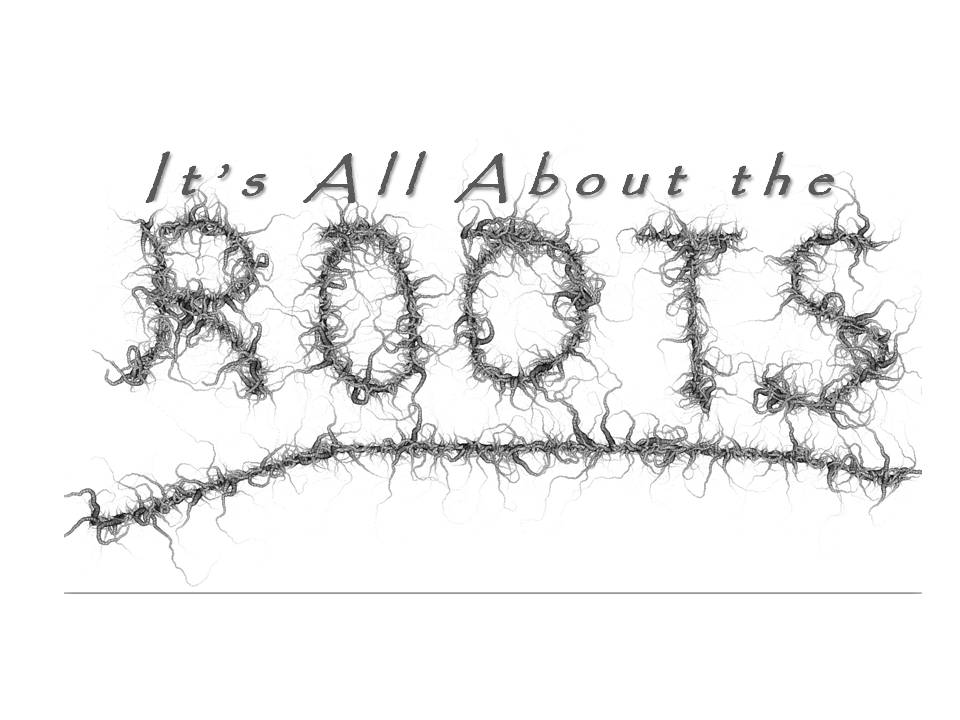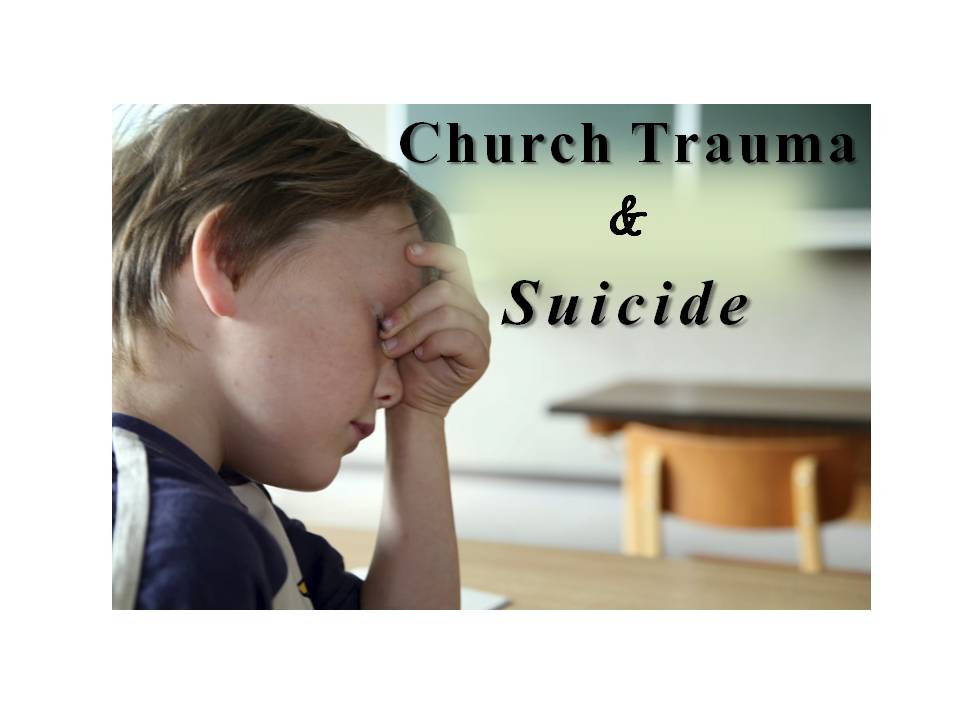
It’s All About the Roots
In the spring, my kids call me the tree lady. This is probably because every spring, I am outside planting trees! I have joyfully planted over 100 saplings in the last several years. I have a friend who digs them out of her yard and brings them to me. I get so excited when I begin planting, in hopes of new growth and long life. But I have learned a few things over the years so I am a bit picky in my placement of them—the healthier the roots, the better the spot they land on my property. So to try to ensure wise placement, I give the trees a thorough examination before I decide where I will plant each one. The top may look lush and beautiful but it’s the roots I’m interested in! If the roots do not look good, I have learned that there is not much hope for their survival. To evaluate the long-term health and performance of a tree, I’ve learned it’s all about the roots. You see, the roots are absolutely key in determining the lasting health and vitality of a tree.
Yes, the roots. Because stress is a part of life, when a tree has been compromised due to extreme temperatures, unusual amounts of drought or water, predation or disease, it will eventually show in the leaves. They will become limp or yellow. But by just looking at the leaves, we often cannot determine if the tree will recover. We have to look at the roots. Healthy roots make a healthy tree and healthy trees can recover from stress and maintain its manifestation in wholesomeness.
And so it is with human systems as well. Roots teach us of the formation of our beliefs, attitudes, conditionings, blind spots, values, and culture. Thus, they determine what will spring forth. What is happening underneath the surface of consciousness is vital to understanding the future of how the system will continue to progress—and how WE will continue to progress if we remain inside the system. As we examine the roots in which we were created, we must step outside—if only momentarily—and observe them objectively from there: “Is there room for positive long-term growth within the system?” “Are the roots spreading out shallowly or digging down deeper?” “What are they tapping into—what is their food source?” “Do we like the fruit the system is creating for us?” “Is this system leading us to increased health and wellbeing or further away from it?”
Too often, we are miles away from our roots—we avoid looking because it can be painful and too hard to be objective. But the truth is, until we get in touch with them, until we feel and experience the pain and growth available within them, we can never truly experience the continuing growth needed for health and longevity. Indeed, without a thorough understanding of our roots, how we came to be—in all the pain and beauty—we are lost. There may be aspects we want to deny and refuse to examine, but until we truly are willing to see our roots in their nakedness, we can never be completely healthy.
This is why most people who leave the Church often are seen as offensive to active members. This is unintentional more often than not. But believers—understandably—misunderstand. Many admonish those who have left to “leave the Church alone”! Well, I’m sorry—we can’t. It was once our tree–our church–too and it is still our church. It’s our church as much as it is yours. Our roots are there; our sweat, our tears. We cannot move forward until we understand thoroughly what happened to us! Healing isn’t found in running or in denial. It’s found in sitting in one’s pain—being present with it. Thus, those who leave must be present with the tree, at least for a season. Hard questions must be asked: “What was going on in that tree (church) that caused so much pain?” We must also examine the fruits that sprung forth while living in the tree: the family dysfunction, the shame, the identity loss—i.e. the trauma. Why? Why so much hurt? We left for a reason. We must ask the questions and search for the answers! We may be standing on the outside but we must examine the tree. We cannot leave it alone! It helps if we are not shamed in our efforts to heal—in our attempts to understand our pain. We are sorry if our trauma is bothering you but we have a right to the tree just the same as anyone. (Click here for more information on the church trauma tree.)
Further, it is selfish, irrational, and impolite to ask someone who is outside of the Church to leave it alone. Who does the Church belong to? It belongs to ALL of us. It belongs to anyone who wants to understand it. To say otherwise is to go contrary to the message the Church sends: “Visitors Welcome.” If someone is investigating the Church, are they told, “Leave the Church alone”? If they have questions or don’t understand, are they told: “You don’t get it so don’t even bother with it anymore—it’s not yours anyway”? No, they are told, “Keep at it; keep coming; keep sorting.” Visitors welcome! It is no different for those who have left. It’s our church too. Please make space for us. If we are to heal, we need to be allowed to examine our roots.
So the next time someone who has left the Church feels a need to examine or talk about it, maybe the subject should be embraced as though they are investigators because ALL who are interested in the Church should ever and always be investigators. The past, the roots in which we were formed, belong to all of us.
And so here’s to good health, Folks! Because when it comes to long-term wellbeing, regular assessments and evaluations go a long way–and it all starts with understanding and then healing our roots! 🙂
 *Danna Hartline is the founder and creator of The Mormon Trauma Mama. She is actively involved in advocating for those suffering from church trauma. She has spoken at many events on the very real issue of church trauma in the LDS Church including the ADAM Conference, Sunstone Symposium, and the When Church Hurts summit. For more information on church trauma, find an overview on the MTM homepage which includes a presentation she did at the Joseph Smith Memorial Building. You can follow Danna on her Facebook page The Mormon Trauma Mama.
*Danna Hartline is the founder and creator of The Mormon Trauma Mama. She is actively involved in advocating for those suffering from church trauma. She has spoken at many events on the very real issue of church trauma in the LDS Church including the ADAM Conference, Sunstone Symposium, and the When Church Hurts summit. For more information on church trauma, find an overview on the MTM homepage which includes a presentation she did at the Joseph Smith Memorial Building. You can follow Danna on her Facebook page The Mormon Trauma Mama.






2 Comments
Cheryl L Nunn
It is so wonderful to read an article that provides unique insight into a major challenge that is facing so many, and one that I have struggled with. I think of the little person I was becoming before “The Church” came into my life when my parents converted to it when I was 13. I was a girl with hopes and dreams and feeling I could do anything in life and fascinated by science. I was one of the first kids at age 11 to be certified to use the “Sea Lung” as it was often called before Scuba Gear, over 50 years ago now. Considered experimental then, and not for children. Yet I pressed and pressed for the opportunity to learn it and do it as I had big plans for my future to become an Oceanographer! Soon the light blew out as I was taught, no careers are not for girls, you are to become a wife and mother to others and a career like that would not be possible. I followed the Church teachings at the time and married a return missionary in the Temple at 17! Soon I became a teenaged mother at 18. Not long after I was divorced with 2 children to support and no job skills at all. The returned missionary I had married had lived a double life and when caught, abandoned all his responsibilities to support his children financially or emotionally. Oh, those Church teachings about women’s roles were so small. I managed to work my way through college with the little girls, and have some great careers, but how I wonder what my life could of been like if I had not followed all those difficult Church prescriptions for second-class citizenship in that Church that kept me down for so very very long.
Steven Retz
The LDS / Brighamite church needs to clean up it’s act in so many things. Here I write about one of them.
https://seekingyhwh.com/2018/10/25/mckenna-denson-a-force-for-good/